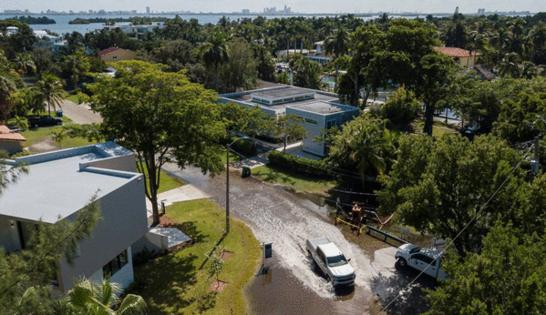What can Charleston and other coastal cities teach South Florida about sea-level rise?
Published in Science & Technology News
MIAMI — South Florida is considered one of the most at-risk areas of the U.S. when it comes to sea-level rise. But what can the region learn from other areas facing similar challenges?
At the Aspen Ideas: Climate summit, which was held last week in Miami Beach, experts from cities that have been battered by climate change and sea-level rise — Charleston, South Carolina; New York City; and New Orleans, Louisiana — gathered to share their experiences and offer a road map of sorts for South Florida.
One of America’s most climate-vulnerable cities is also one of its oldest. Charleston, which is 350 years old and surrounded by marshes, has the largest historic district in the nation, and pulls in 8 million tourists a year.
Swaths of the historic district sit at about 2 feet above sea level or less, and Dale Morris, the chief resilience officer of Charleston, said during the panel discussion that the city is planning for 14 inches of sea-level rise by 2050.
“If we’re not careful, by 2050 major flood events will happen two or three times a month,” Morris said. “Charleston will not survive. It’s as simple as that.”
Morris said that 71% of their major flood events in the last century have occurred since 2015. And the city’s minor flood events have gradually ramped up from a handful per year in the 1970s to dozens per year in the 1990s to 89 in 2019 and 72 in 2022.
To survive, the city is working with the Army Corps of Engineers to create perimeter protection around the central peninsula, where the historic district is. It’ll cost $1.3 billion, with the city paying 35%.
Morris’ sea-level rise lessons have to do with how to deal with the Army Corps of Engineers. He said their mantra has traditionally been “highest benefit for the lowest cost.” This can result in blunt plans that to many seem downright ugly.
Case in point: the 2020 Army Corps proposal to build six miles of slab-like seawall, ranging from one to 13 feet tall, in front of and through parts of Miami. The wall would have left some neighborhoods on the flood side of storm surge. Miamians were up in arms, and now a hybrid plan incorporating green infrastructure is brewing.
Morris said the Corps was merely following cost efficiency orders from Congress. But that’s changing. In 2021, the Corp had to start considering “comprehensive benefits” of natural and nature-based features, and also social effects and environmental justice.
...continued
©2024 Miami Herald. Visit miamiherald.com. Distributed by Tribune Content Agency, LLC.










Comments